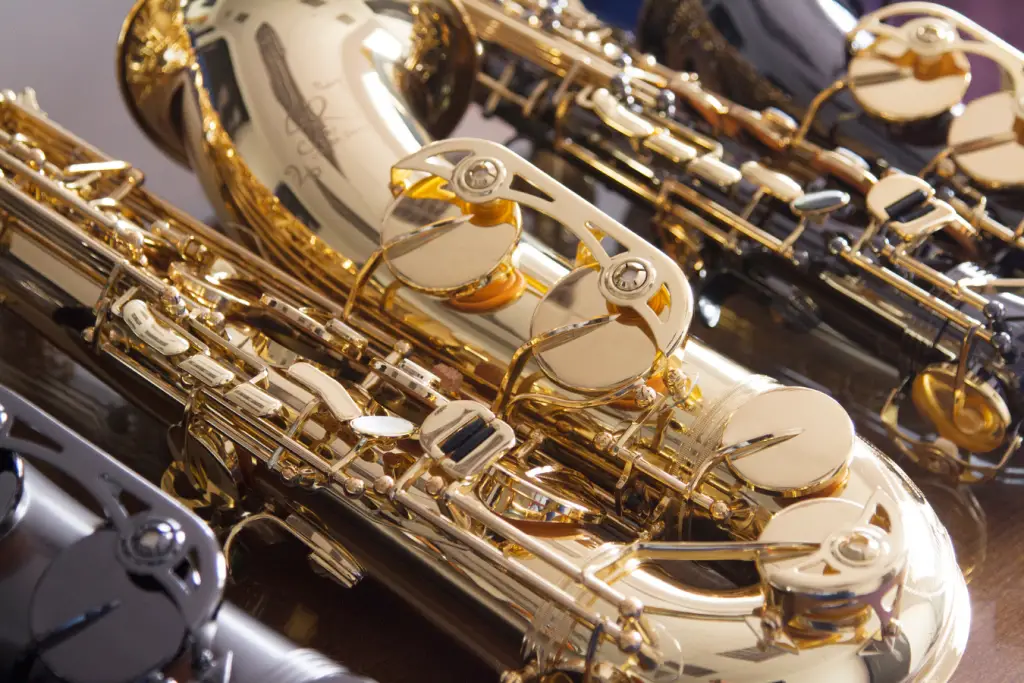Saxophones come in various sizes and types, each with its unique characteristics. Among these, the alto and tenor saxophones stand out as two of the most popular choices for musicians. While they may look similar at first glance, these instruments have distinct differences that set them apart.
The alto saxophone is pitched in E♭ and produces a brighter, higher-pitched sound, while the tenor saxophone is pitched in B♭ and offers a deeper, richer tone. This fundamental distinction in pitch creates a noticeable variation in the overall sound produced by each instrument. The alto’s lighter, more agile sound contrasts with the tenor’s fuller, more robust character.
Beyond their tonal qualities, alto and tenor saxophones differ in size and weight. The alto saxophone is smaller and lighter, making it easier to handle, especially for beginners or those with smaller hands. In contrast, the tenor saxophone is larger and heavier, requiring more physical effort to play and hold. These physical attributes can influence a musician’s choice between the two instruments, depending on their physical capabilities and musical preferences.
Design and Construction
Alto and tenor saxophones share fundamental design elements but differ in size and proportions. These differences affect their sound, ergonomics, and playing experience.
Material and Shape
Both alto and tenor saxophones are typically made of brass, which is then lacquered or plated. The alto sax is smaller, measuring about 25 inches in length, while the tenor sax is larger at around 30 inches. This size difference contributes to their distinct tonal qualities.
The alto sax has a more compact, curved shape. Its bell flares out less dramatically than the tenor’s. The tenor sax, being larger, has a more pronounced curve and a wider bell. This affects the instrument’s resonance and projection.
Both instruments feature a mouthpiece, neck, body, and bell. The body includes the bow, which connects the lower body to the bell. The tenor’s longer body and larger bell contribute to its deeper, richer tone.
Key Layout and Ergonomics
Alto and tenor saxophones share a similar key layout, but with some notable differences. The alto sax has smaller keys and closer spacing, making it more manageable for players with smaller hands. The tenor’s larger size means its keys are spaced further apart.
Both instruments use the Boehm system for fingering, but the tenor requires slightly more reach and hand span. The alto’s compact design allows for easier manipulation of the upper register keys. Tenor players often need to stretch more to reach certain key combinations.
The palm keys, located near the top of the instrument, are positioned differently on each saxophone. On the alto, they’re typically more accessible, while tenor players may need to adjust their hand position more frequently to reach them comfortably.
Sound Characteristics
Alto and tenor saxophones produce distinct tonal qualities and cover different pitch ranges. These characteristics significantly influence their roles in various musical genres and ensemble settings.
Tone Quality
The alto saxophone generates a brighter and livelier sound. Its smaller size contributes to a more penetrating timbre, often described as crisp and clear. This makes the alto sax well-suited for solo performances and melodic lines in jazz and classical music.
In contrast, the tenor saxophone offers a mellow, rich, and deep sound. Its larger body produces a warmer, fuller tone that can be both smooth and powerful. The tenor sax’s robust sound allows it to blend well with other instruments while still maintaining its distinctive voice.
Pitch and Octave Range
The alto saxophone is pitched in the key of E♭ (E-flat). This means when a player reads a C on the sheet music, they produce an E♭ on the alto sax. Its higher pitch range gives it a more soprano-like quality in the saxophone family.
The tenor saxophone, on the other hand, is pitched in the key of B♭ (B-flat). When reading a C, a tenor sax player produces a B♭. This lower pitch contributes to its deeper, more resonant sound. The tenor sax’s range allows it to bridge the gap between higher and lower-pitched instruments in ensembles.
Musical Roles and Genres
Alto and tenor saxophones play distinct roles in various musical genres. Their unique tonal qualities and ranges influence how composers and performers utilize them in different musical contexts.
Classical and Jazz Usage
In classical music, alto saxophones often take melodic roles in orchestral and chamber settings. Their bright, agile sound suits lyrical passages and solos. Tenor saxophones, with their deeper timbre, frequently appear in larger ensemble works.
Jazz ensembles commonly feature both alto and tenor saxophones. Alto players like Charlie Parker pioneered bebop, while tenors like John Coltrane defined cool jazz. The alto’s higher pitch cuts through ensemble textures, making it ideal for lead parts.
Tenor saxophones excel in smoother, more mellow jazz styles. Their rich tone complements ballads and slower pieces. Many jazz quintets include both alto and tenor saxes to create a full, balanced sound.
Ensemble and Solo Contexts
In big bands, alto saxophones typically lead the saxophone section. Their piercing tone projects well in large ensembles. Tenor saxophones often play supporting harmonies or take solos that contrast with the altos.
As solo instruments, both saxophones shine in different ways. Alto saxophones are favored for their agility and bright sound, making them popular in contemporary classical and experimental music. Tenor saxophones dominate in jazz and pop solos, where their soulful, robust tone captivates audiences.
Small jazz combos frequently feature either alto or tenor as the lead horn. The choice often depends on the desired mood and style of the piece.

